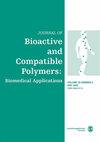Development of cellulose-based films containing salicylic acid for wound dressing applications: Fabrication, properties and in vitro assessment
IF 2.1
4区 生物学
Q3 BIOTECHNOLOGY & APPLIED MICROBIOLOGY
引用次数: 0
Abstract
A wound dressing is important to ensure an efficient healing process while protecting the wound area. This research study combined 2-hydroxyethyl cellulose (2HEC)—an etherified cellulose derivative with salicylic acid (SA) to develop a single layer and investigate the 2HEC viability as wound dressing material. Nine different samples with different compositions of SA, from 5 wt.% to 40 wt.% (with an interval of 5 wt.%) and one control sample without adding SA were prepared via the solution casting method. The 2HEC-SA films were studied regarding the effects of SA composition on antimicrobial properties ( Staphylococcus aureus) via the well-diffusion method. Additionally, degradability, mechanical properties, X-ray diffraction (XRD), and Fourier transform infrared (FTIR) of 2HEC-SA films have also been tested. The strongest antimicrobial effect of 2HEC-SA film was obtained at 40 wt.% with a 16 mm inhibition zone diameter. There was a noticeable decreasing weight loss pattern in the degradation test and the tensile strength of 2HEC-SA film when the composition of salicylic acid is increased. 2HEC-SA film changes phases from amorphous to crystalline starting at 25 wt.% of salicylic acid as seen through XRD, while FTIR shows that complexation of 2HEC and salicylic acid occurred at 1050 cm开发用于伤口敷料的含水杨酸的纤维素基薄膜:制作、性能和体外评估
伤口敷料对于确保伤口有效愈合同时保护伤口区域非常重要。本研究将 2-羟乙基纤维素(2HEC)--一种醚化纤维素衍生物--与水杨酸(SA)相结合,开发出一种单层敷料,并研究了 2HEC 作为伤口敷料的可行性。研究人员通过溶液浇铸法制备了九种不同水杨酸成分的样品(从 5 wt.% 到 40 wt.%,间隔为 5 wt.%),以及一种不添加水杨酸的对照样品。通过井扩散法研究了 SA 成分对 2HEC-SA 薄膜抗菌性能(金黄色葡萄球菌)的影响。此外,还测试了 2HEC-SA 薄膜的降解性、机械性能、X 射线衍射 (XRD) 和傅立叶变换红外 (FTIR)。2HEC-SA 薄膜的抗菌效果在 40 wt.% 时最强,抑制区直径为 16 mm。当水杨酸成分增加时,2HEC-SA 薄膜的降解测试和拉伸强度都出现了明显的减重模式。通过 XRD 可以看出,从水杨酸含量为 25 wt.% 开始,2HEC-SA 薄膜的相位从无定形变为结晶,而傅立叶变换红外光谱显示,2HEC 和水杨酸在 1050 cm-1 处发生了络合。
本文章由计算机程序翻译,如有差异,请以英文原文为准。
求助全文
约1分钟内获得全文
求助全文
来源期刊

Journal of Bioactive and Compatible Polymers
工程技术-材料科学:生物材料
CiteScore
3.50
自引率
0.00%
发文量
27
审稿时长
2 months
期刊介绍:
The use and importance of biomedical polymers, especially in pharmacology, is growing rapidly. The Journal of Bioactive and Compatible Polymers is a fully peer-reviewed scholarly journal that provides biomedical polymer scientists and researchers with new information on important advances in this field. Examples of specific areas of interest to the journal include: polymeric drugs and drug design; polymeric functionalization and structures related to biological activity or compatibility; natural polymer modification to achieve specific biological activity or compatibility; enzyme modelling by polymers; membranes for biological use; liposome stabilization and cell modeling. This journal is a member of the Committee on Publication Ethics (COPE).
 求助内容:
求助内容: 应助结果提醒方式:
应助结果提醒方式:


